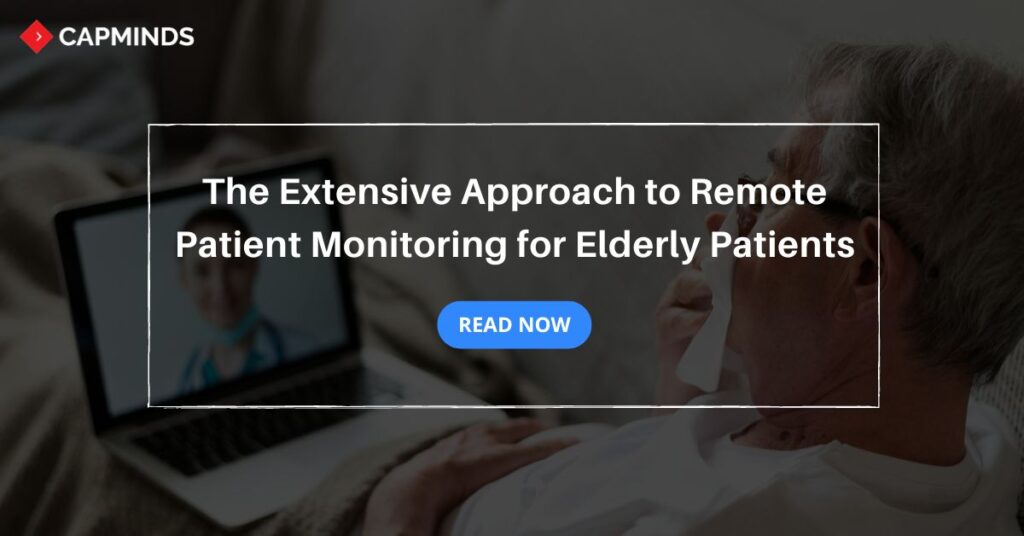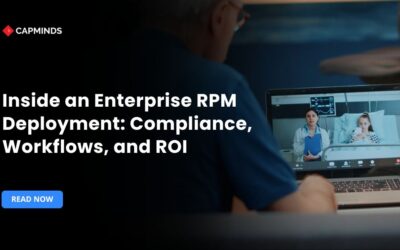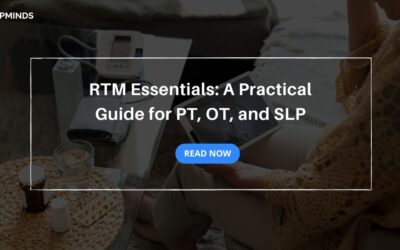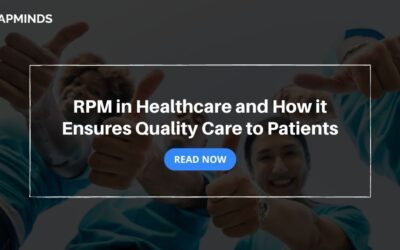The Extensive Approach to Remote Patient Monitoring for Elderly Patients
Remote patient monitoring (RPM) is a revolutionized health technology that greatly impacts modern healthcare. It allows healthcare providers to easily monitor patients outside the facility, making it more convenient for both patients and practitioners.
As the elderly population rises, the necessity of providing better care has become more important and requires more frequent care than the younger population.
Moreover, providers need to constantly adjust the services, technologies, and medications to take good care of elders. Remote patient monitoring brings a better solution for an extensive care approach for elderly patients. This blog post shares how RPM improves elderly care with a healthier approach.
What is Remote Patient Monitoring?
Remote patient monitoring (RPM) is a health technology that is used to monitor patients’ health remotely and enables keeping an eye on patient health when in-person care is not possible.
This especially benefits chronic care patients. RPM enables to monitoring of patient health vitals in real-time, collecting sensitive health data, and making adjustments in medications and treatment for better outcomes.
This type of continuous tracking especially helps patients with asthma, diabetes, heart conditions, mental illness, and others, as well as the recent pandemic outbreak, COVID.
RPM programs employ various devices like oximeters, scales, blood pressure monitoring, blood glucose meters, heart monitors, and even smartwatches.
Related: The Impact of Connected Health Technology on Patient Engagement
The Role of Remote Patient Monitoring in Elderly Care
Remote patient monitoring is a valuable technology that improves elderly care outcomes. It plays a crucial role in elderly care:
- RPM consistently monitors health vitals like Blood pressure, blood sugar, and weight. These data empower providers to develop personalized treatments and make adjustments in medication.
- By continuously monitoring, RPM helps to identify worrying trends in vital signs beforehand. This early detection helps to prevent complications.
- Remote patient monitoring significantly eliminates the need for frequent in-person check-ups, allowing elders to receive care conveniently from home.
- RPM allows healthcare providers to remotely monitor a larger number of patients, optimizing their time and resources.
Benefits of Remote Patient Monitoring in Improving Elderly Patients
By employing several devices and applications, RPM offers many advantages that help to take care of older patients. Utilizing Remote patient monitoring benefits by:
1. Early Detection and Better Treatment Outcomes
- RPM enables continuous monitoring of elder patients’ health outside the facility.
- It allows providers to detect any warning signs in patients’ health issues early.
- Healthcare providers can timely intervene before it becomes more complicated.
- This leads to better treatment outcomes and reduces the overall healthcare costs.
- Ultimately, improves the quality of elderly patients’ lives.
2. Increased Independence and Autonomy
- RPM enables elderly patients to monitor their health status and keep track of progress toward their health goals.
- It provides a sense of control over personal health and well-being.
- RPM helps to increase confidence and motivation to engage in better health behaviors.
3. Improved Medication Management
- Using smart connected devices like sensors, wearables, smart pill bottles, and smart inhalers.
- Healthcare providers can monitor and manage medication adherence, dosage, and side effects of elderly patients in real-time, remotely.
- The elder patients can often receive alerts for missed doses or wrong medication intake.
- Healthcare providers can intervene promptly to prevent adverse drug events.
- Healthcare practitioners can adjust medication dosages based on real time to improve treatment efficiency and reduce the risk of reactions.
4. Accessibility and Chronic Care Management
- RPM can reduce in-person visits, making healthcare more convenient. Especially for elderly patients with limited mobility.
- It makes easier for communication and care coordination between healthcare providers and elderly patients.
- Enables better management of chronic conditions like diabetes, hypertension, heart failure, kidney disease, and lung disease.
- Monitor health vitals 24/7 which helps to identify health trends in real-time, making it easier for earlier intervention.
- Helps to reduce disease progression and prevents hospitalization.
Related: Unlocking the Power of Connected Health Data: From Insights to Actionable Strategies
Navigating the challenges associated with Remote Patient Monitoring for Elderly care
Even though Remote Patient Monitoring brings value to elderly care, it is also associated with various challenges. This might limit the healthcare providers and patients to get the most out of it.
Healthcare providers should tackle these challenges to provide better care for elderly patients.
1. Accessibility and Cost
Remote patient monitoring offers accessibility which is an advantage as well as a challenge for many elderly patients. Because most elderly patients might not have the technological knowledge to utilize the RPM Devices and program. Even if they have access, they might need help in using them.
Also, RPM Devices and programs might cost high, which becomes a deal breaker for some patients.
This can create healthcare disparities as patients who have access can receive different levels of healthcare service than those who don’t have access.
2. Patient Acceptance
More than implementing remote patient monitoring, elder patients have to accept it, which is a more important consideration.
Some elderly patients might resist utilizing the Remote patient monitoring technology to manage their health. And privacy and security are some of the concerns. Healthcare professionals have to convince elder patients to feel comfortable about using the RPM Devices.
3. Integration
To make the Remote patient monitoring work efficiently, it needs to be integrated with the existing healthcare system.
This is to ensure that the healthcare providers share and utilize patients’ health data correctly. The integration itself is challenging as different healthcare systems may use other technological platforms.
4. Technological Limitations
Even though RPM has the potential to improve patient outcomes, there are certain limitations in utilizing the technology. For instance, some RPM devices may have technical issues or be prone to errors, which can affect the collection of patients’ health data accurately.
Additionally, some elderly patients may find using specific RPM devices difficult because of physical disparities.
CapMind’s Remote Patient Monitoring Solution
Be it treatment for anything, RPM’s role is vital. Its use of devices and delivering high-quality care remotely enables patients to relax and forget in-patient visit pressures.
Why choose CapMinds RPM?
- Simple new patient enrolment
- Manual & automated patient data access
- Customizable notification system
- Fully compliant billing
- Secure & HIPAA compliant
- Practice specific support
- Real-time tracking
- Better at-home chronic care management
- Reduced hospitalizations
- Efficient Remote Physiologic & Therapeutic Monitoring
- High-end Interoperability
- Easy service integrations and customizations – whatever you need!
CapMinds RPM solution allows patients to use digitally connected devices – like heart monitors and blood pressure cuffs to perform routine tests and share their health data with a healthcare professional.
“Let’s make your practice more accessible to people around the world, together”




